Special Report
Countries Where Pollution Control Would Add the Most to Life Expectancy

Published:

Air pollution is not just an eye, nose, throat, and respiratory irritant; it can also knock off years of the lives of people experiencing long-term exposure. The World Health Organization explains that air pollution is caused by any chemical, physical, or biological agent that modifies the natural characteristics of outdoor or indoor atmospheres.
Household combustion devices such as gas or wood-burning stoves, forest fires, and vehicular and industrial emissions are major sources of these contaminants. They release particulate matter, carbon monoxide, ozone, nitrogen dioxide, and sulfur dioxide that cause respiratory and other diseases, increasing illness and death. They are especially harmful to children, older adults, pregnant women, and anyone with heart and lung diseases.
While developed countries can suffer from bad air days, particularly urban areas, it is developing countries that suffer the most. People living in these countries can lose years of their lives simply by breathing the surrounding air, especially those living in the most polluted areas. (Also see the 25 countries emitting the most CO2.)
To identify the countries where air pollution takes the most years off of life, 24/7 Wall St. reviewed the University of Chicago’s Energy Policy Institute Air Quality Life Index 2023 Annual Update. We listed here the 20 countries where the average life expectancy would increase by at least two years if PM2.5 air pollution would be reduced from 2021 levels to WHO guidelines of 5 micrograms per cubic meter of air. See the report’s full methodology here.
PM2.5 stands for particulate matter that is 2.5 microns in diameter or smaller. These microparticles, which are often emitted by motor vehicles, are much smaller than the diameter of pollen or 1/30 the diameter of a human hair, penetrating deep into the lungs and entering the bloodstream.
According to the report, India and Bangladesh would benefit the most from reducing PM2.5 pollution, and would gain an average of 5.3 years and 6.8 years, respectively, to their populations life expectancy. (In the U.S., these are 23 places where industrial air pollution is so bad it causes cancer.)
Most of the 20 countries where air pollution takes off the most years of life are in Africa or Asia, including the two largest countries by population — China and India — where about 35% of the global population lives. Six of these 20 countries are among the top 20 most populated in the world, but the list also includes smaller countries like Bhutan, El Salvador, and Rwanda.
Here are the countries where air pollution is costing the most in years of life.
Click here to read our detailed methodology.
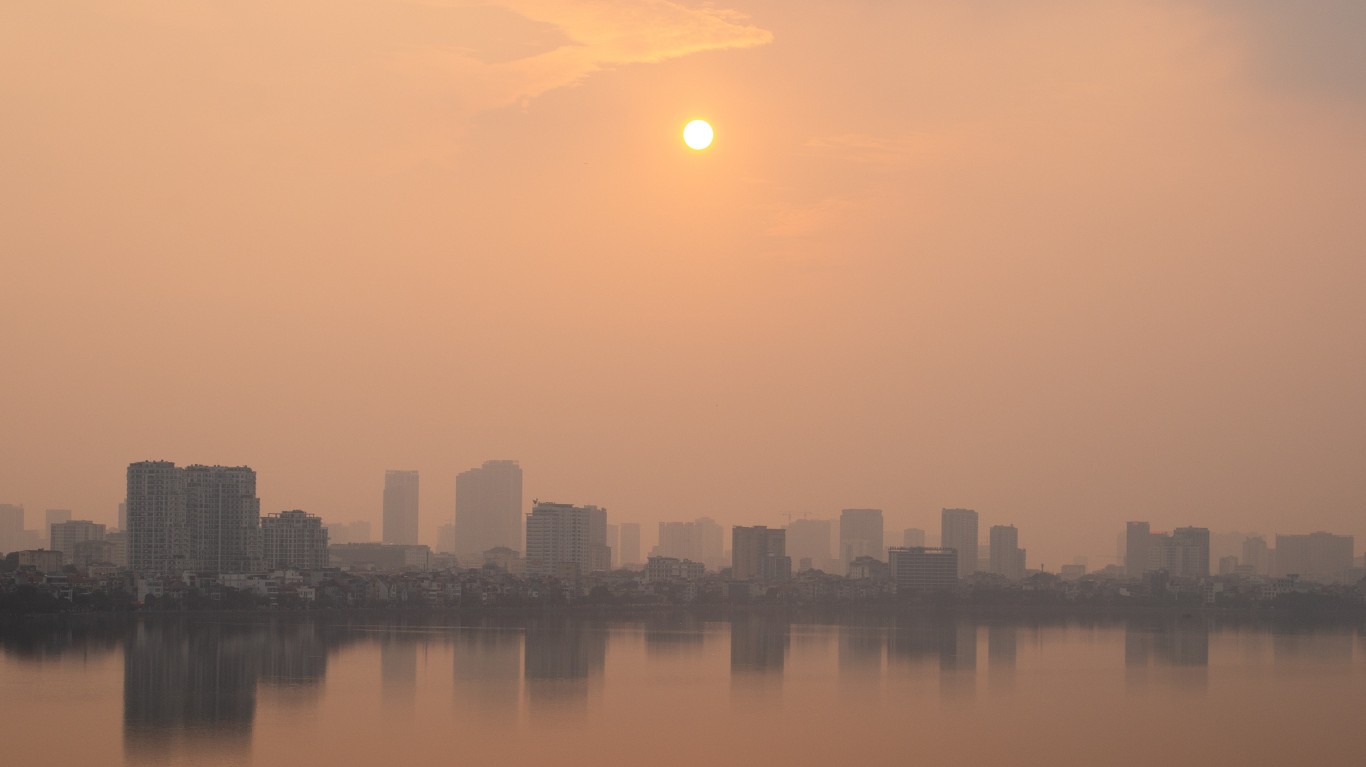
20. Vietnam
> Gains from reducing pollution to WHO guidelines: 2 years in avg life expectancy
> Avg PM2.5 air pollution: 25.8 micrograms per cubic meter – # 19 worst in the world
> Population in 2022: 98,186,856
[in-text-ad]
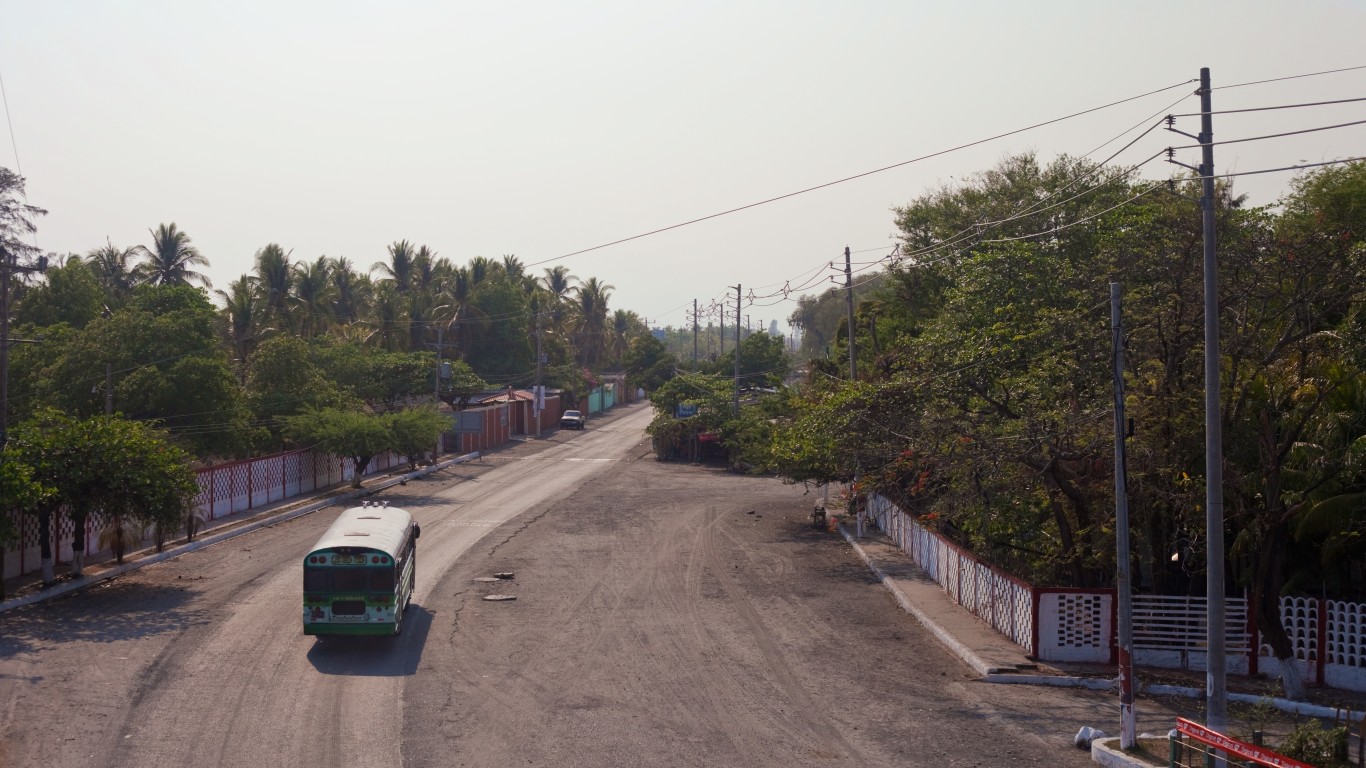
19. El Salvador
> Gains from reducing pollution to WHO guidelines: 2 years in avg life expectancy
> Avg PM2.5 air pollution: 25.8 micrograms per cubic meter – # 19 worst in the world
> Population in 2022: 6,336,392

18. Uganda
> Gains from reducing pollution to WHO guidelines: 2.1 years in avg life expectancy
> Avg PM2.5 air pollution: 26.7 micrograms per cubic meter – # 18 worst in the world
> Population in 2022: 47,249,585

17. Laos
> Gains from reducing pollution to WHO guidelines: 2.2 years in avg life expectancy
> Avg PM2.5 air pollution: 27.2 micrograms per cubic meter – # 17 worst in the world
> Population in 2022: 7,529,475
[in-text-ad-2]
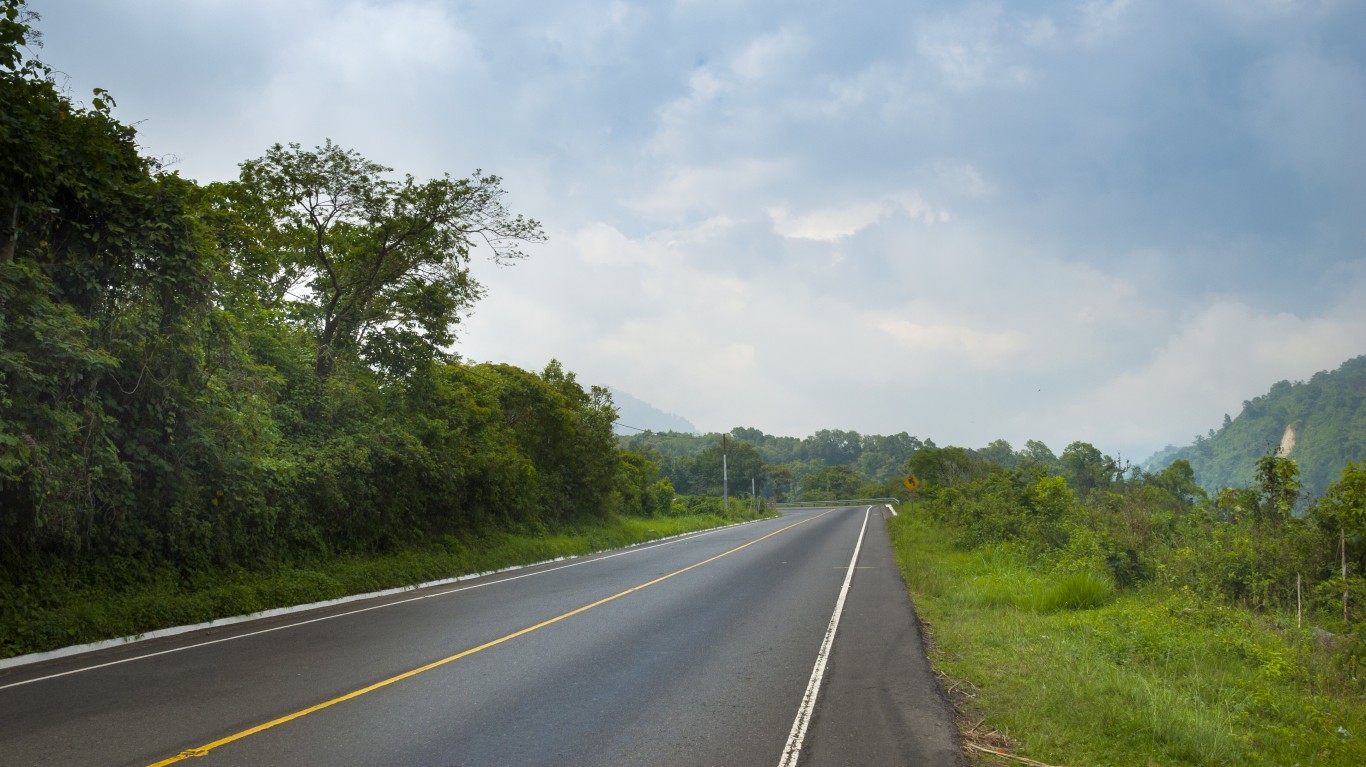
16. Guatemala
> Gains from reducing pollution to WHO guidelines: 2.4 years in avg life expectancy
> Avg PM2.5 air pollution: 29 micrograms per cubic meter – # 16 worst in the world
> Population in 2022: 17,357,886
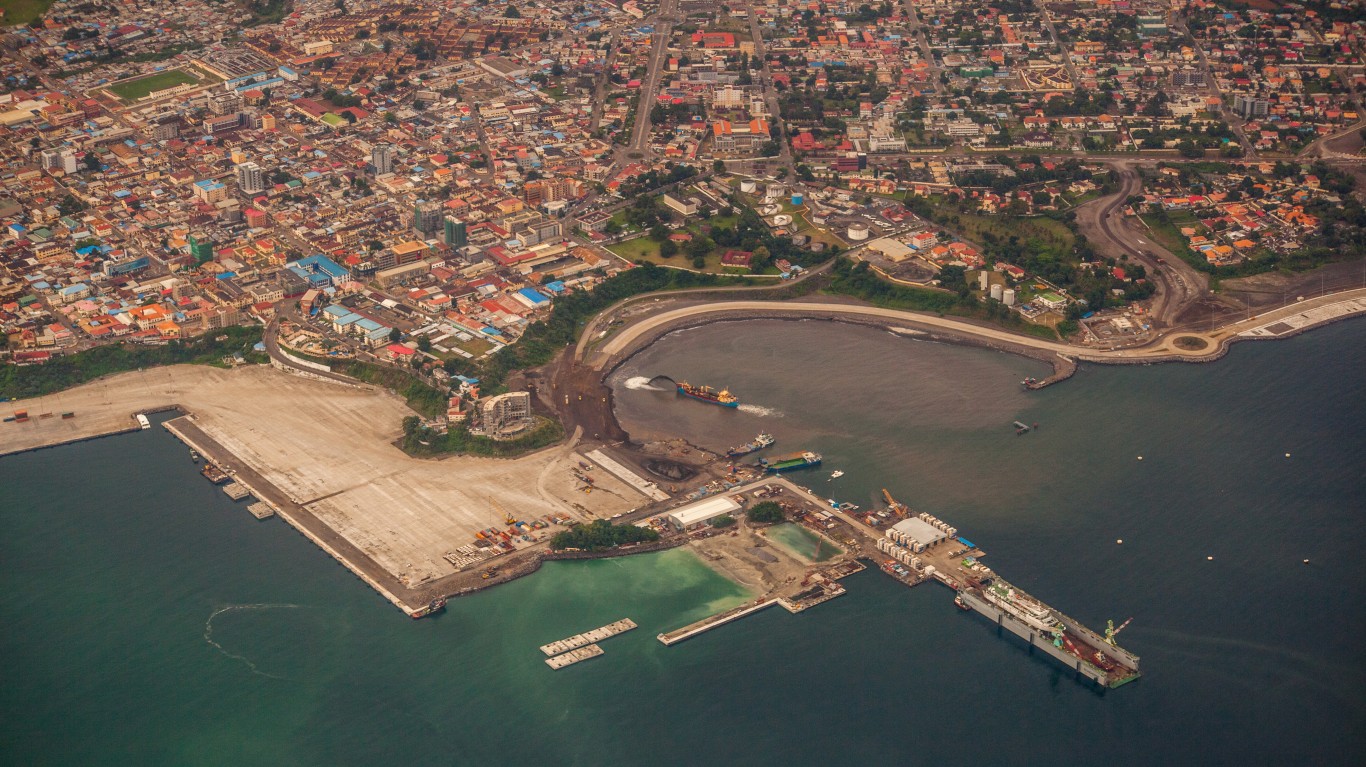
15. Equatorial Guinea
> Gains from reducing pollution to WHO guidelines: 2.4 years in avg life expectancy
> Avg PM2.5 air pollution: 29.1 micrograms per cubic meter – # 15 worst in the world
> Population in 2022: 1,674,908
[in-text-ad]
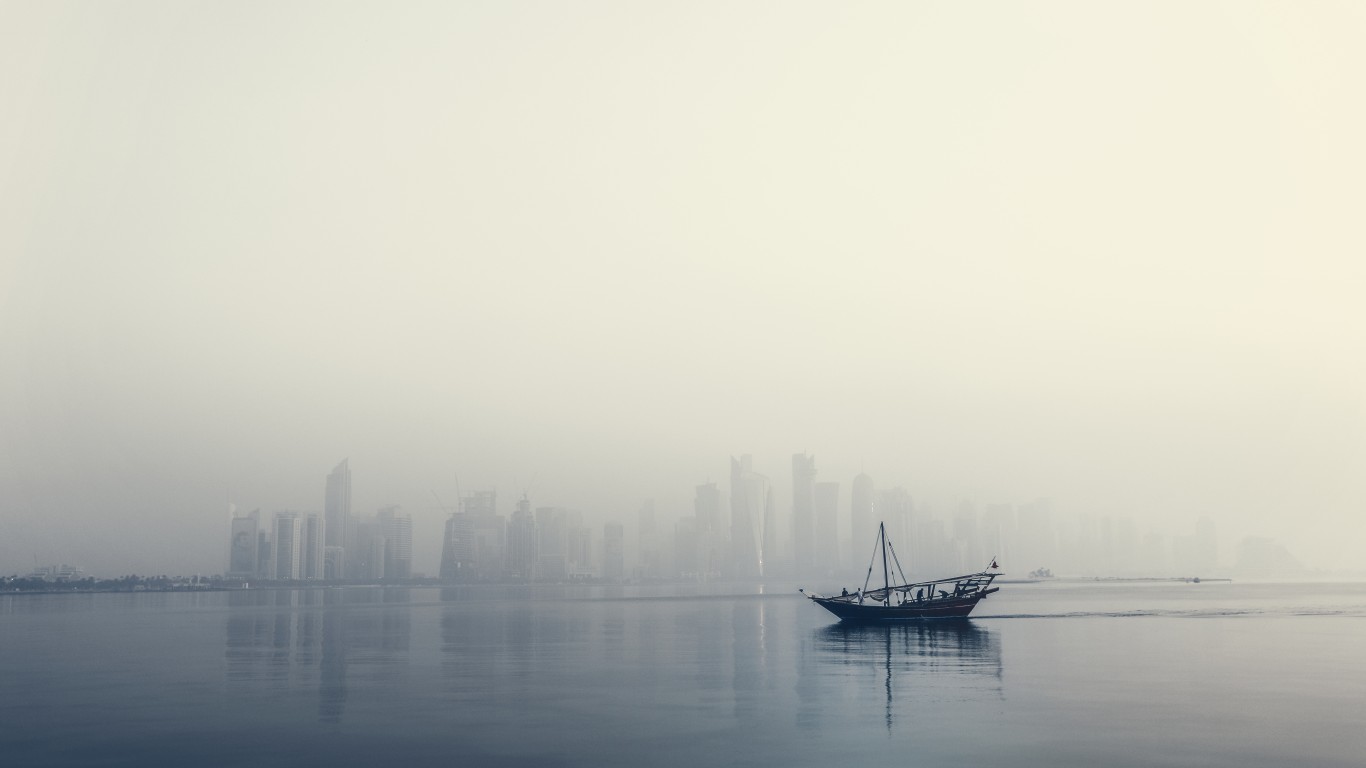
14. Qatar
> Gains from reducing pollution to WHO guidelines: 2.5 years in avg life expectancy
> Avg PM2.5 air pollution: 30 micrograms per cubic meter – # 14 worst in the world
> Population in 2022: 2,695,122

13. China
> Gains from reducing pollution to WHO guidelines: 2.5 years in avg life expectancy
> Avg PM2.5 air pollution: 30.2 micrograms per cubic meter – # 13 worst in the world
> Population in 2022: 1,412,175,000

12. Bhutan
> Gains from reducing pollution to WHO guidelines: 2.5 years in avg life expectancy
> Avg PM2.5 air pollution: 30.6 micrograms per cubic meter – # 12 worst in the world
> Population in 2022: 782,455
[in-text-ad-2]

11. Cameroon
> Gains from reducing pollution to WHO guidelines: 2.5 years in avg life expectancy
> Avg PM2.5 air pollution: 31 micrograms per cubic meter – # 11 worst in the world
> Population in 2022: 27,914,536

10. Burundi
> Gains from reducing pollution to WHO guidelines: 2.6 years in avg life expectancy
> Avg PM2.5 air pollution: 31.9 micrograms per cubic meter – # 10 worst in the world
> Population in 2022: 12,889,576
[in-text-ad]

9. Rwanda
> Gains from reducing pollution to WHO guidelines: 2.7 years in avg life expectancy
> Avg PM2.5 air pollution: 32.4 micrograms per cubic meter – # 8 worst in the world
> Population in 2022: 13,776,698

8. Republic of the Congo
> Gains from reducing pollution to WHO guidelines: 2.7 years in avg life expectancy
> Avg PM2.5 air pollution: 32.4 micrograms per cubic meter – # 8 worst in the world
> Population in 2022: 5,970,424

7. Democratic Republic of the Congo
> Gains from reducing pollution to WHO guidelines: 2.9 years in avg life expectancy
> Avg PM2.5 air pollution: 34.6 micrograms per cubic meter – # 7 worst in the world
> Population in 2022: 99,010,212
[in-text-ad-2]

6. Myanmar
> Gains from reducing pollution to WHO guidelines: 2.9 years in avg life expectancy
> Avg PM2.5 air pollution: 35 micrograms per cubic meter – # 6 worst in the world
> Population in 2022: 54,179,306

5. Mongolia
> Gains from reducing pollution to WHO guidelines: 3 years in avg life expectancy
> Avg PM2.5 air pollution: 36 micrograms per cubic meter – # 5 worst in the world
> Population in 2022: 3,398,366
[in-text-ad]
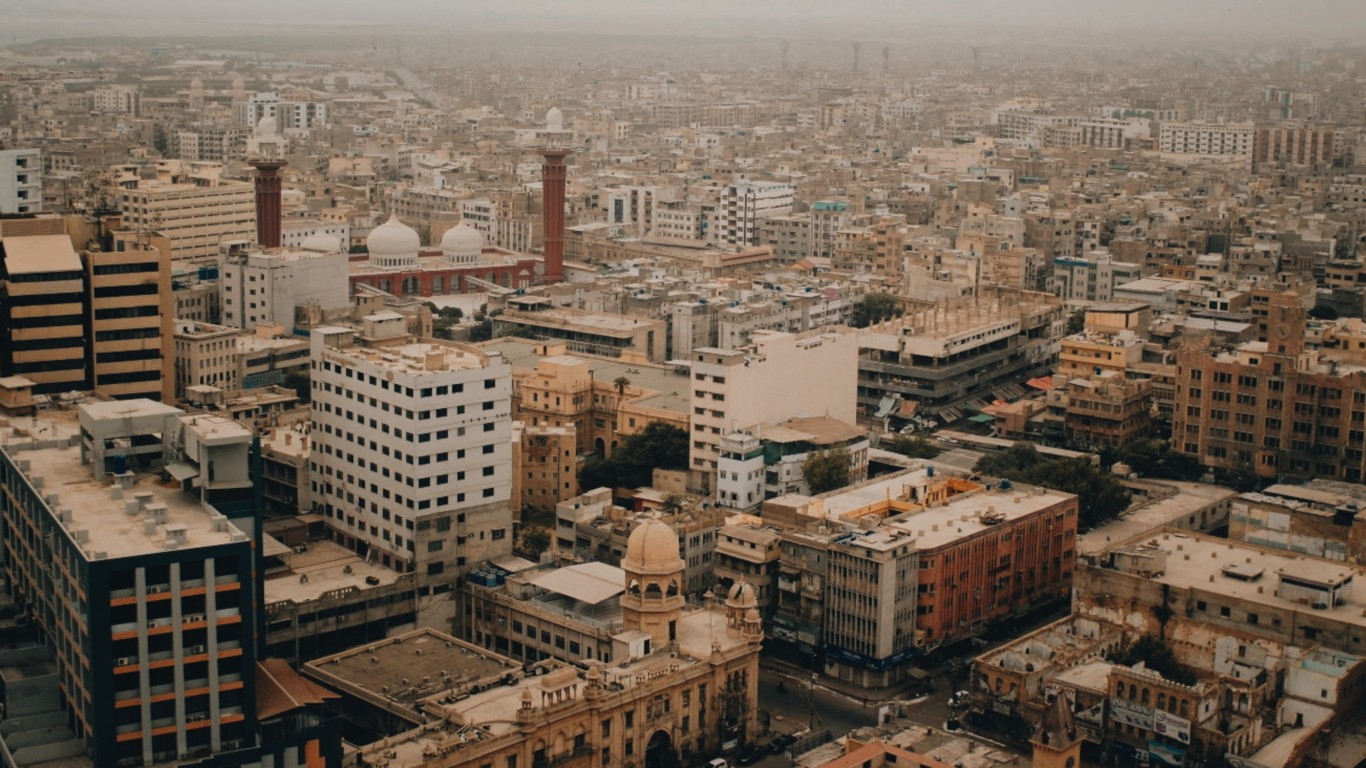
4. Pakistan
> Gains from reducing pollution to WHO guidelines: 3.9 years in avg life expectancy
> Avg PM2.5 air pollution: 44.7 micrograms per cubic meter – # 4 worst in the world
> Population in 2022: 235,824,862

3. Nepal
> Gains from reducing pollution to WHO guidelines: 4.6 years in avg life expectancy
> Avg PM2.5 air pollution: 51.7 micrograms per cubic meter – # 3 worst in the world
> Population in 2022: 30,547,580
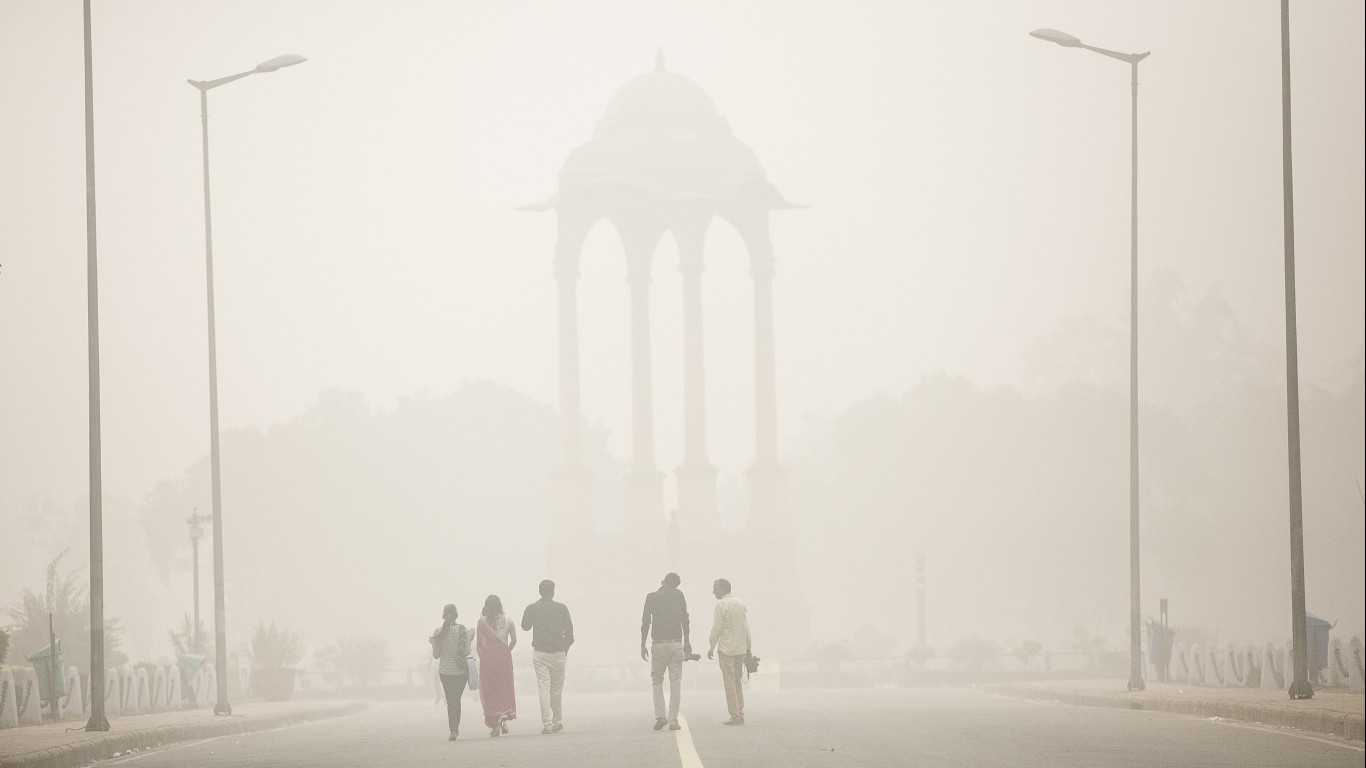
2. India
> Gains from reducing pollution to WHO guidelines: 5.3 years in avg life expectancy
> Avg PM2.5 air pollution: 58.7 micrograms per cubic meter – # 2 worst in the world
> Population in 2022: 1,417,173,173
[in-text-ad-2]
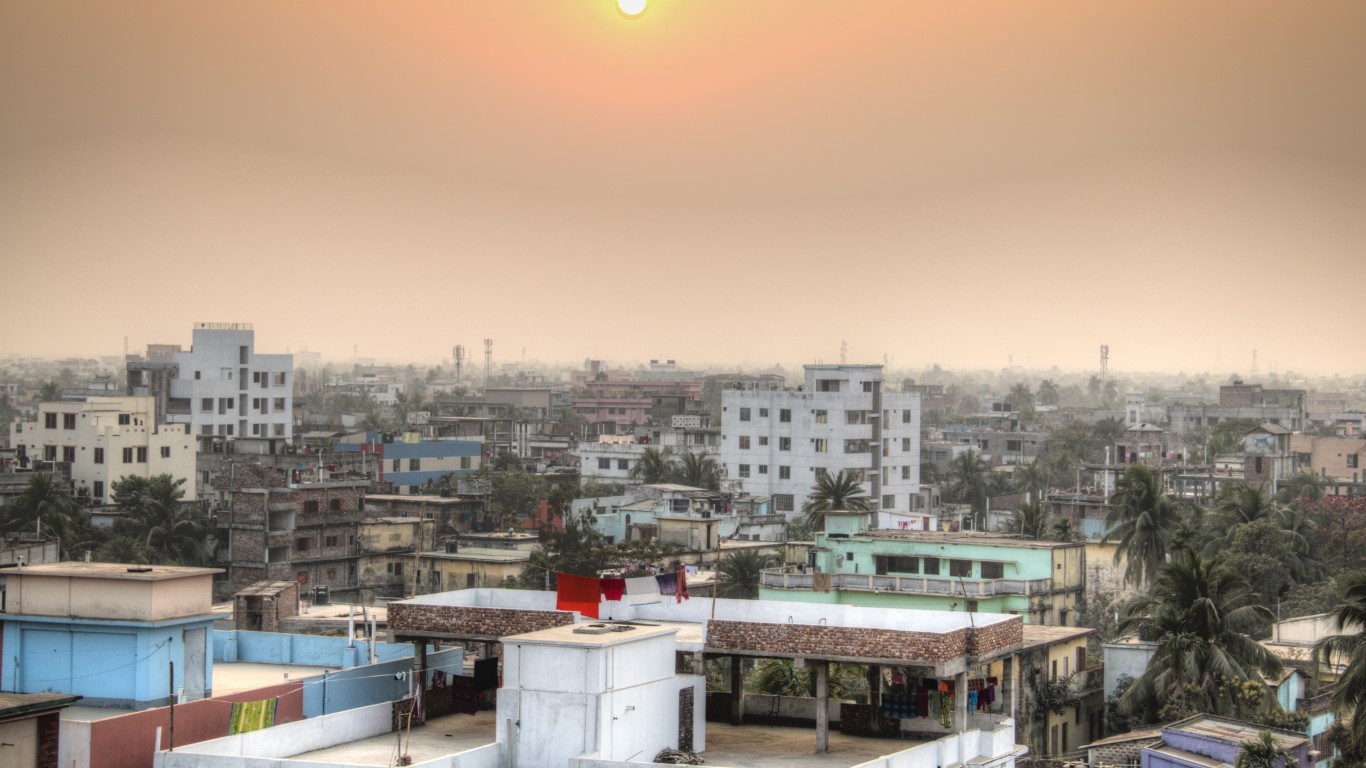
1. Bangladesh
> Gains from reducing pollution to WHO guidelines: 6.8 years in avg life expectancy
> Avg PM2.5 air pollution: 74 micrograms per cubic meter – # 1 worst in the world
> Population in 2022: 171,186,372
Methodology:
To identify the countries where air pollution takes the most years off of life, 24/7 Wall St. reviewed the University of Chicago’s Energy Policy Institute Air Quality Life Index 2023 Annual Update. We listed here the 20 countries where the average life expectancy would increase by at least two years if PM2.5 air pollution would be reduced from 2021 levels to WHO guidelines of 5 micrograms per cubic meter of air.
“The life expectancy calculations made by the AQLI are based on a pair of peer-reviewed studies, Chen et al. (2013) and Ebenstein et al. (2017), co-authored by Michael Greenstone, that exploit a unique natural experiment in China. By comparing two subgroups of the population that experienced prolonged exposure to different levels of particulate air pollution, the studies were able to plausibly isolate the effect of particulate air pollution from other factors that affect health. Ebenstein et al. (2017) found that sustained exposure to an additional 10 μg/m3 of PM10 reduces life expectancy by 0.64 years. In terms of PM2.5, this translates to the relationship that an additional 10 μg/m3 of PM2.5 reduces life expectancy by 0.98 years. This metric is then combined with sea-salt and mineral dust removed satellite-derived PM2.5 data.”
See the report’s full methodology here.
Population statistics came from the World Bank and are for 2022.
Let’s face it: If your money is just sitting in a checking account, you’re losing value every single day. With most checking accounts offering little to no interest, the cash you worked so hard to save is gradually being eroded by inflation.
However, by moving that money into a high-yield savings account, you can put your cash to work, growing steadily with little to no effort on your part. In just a few clicks, you can set up a high-yield savings account and start earning interest immediately.
There are plenty of reputable banks and online platforms that offer competitive rates, and many of them come with zero fees and no minimum balance requirements. Click here to see if you’re earning the best possible rate on your money!
Thank you for reading! Have some feedback for us?
Contact the 24/7 Wall St. editorial team.